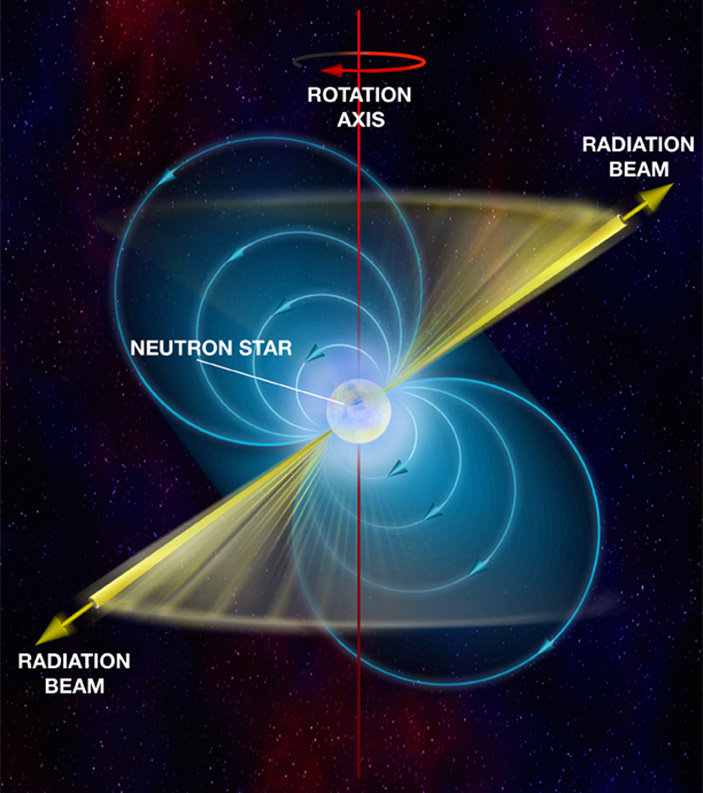Theorists tell their fantasies about how distant variable and pulsating stars, neutron stars and “black holes” work. The basis for their inventions is their absurd theories. On the creation of such theories about distant objects, many “Nobel-bearing Stevohokingoids” have glorified themselves, but there is not a single “Nobel-bearing” or at least somehow known to the world theorist who has at least approximately explained the phenomena occurring on the closest star to us, the Sun!
The sun rotates on its axis, making a full revolution at the equatorial points in relation to the stars in 24.47 days. But the speed of rotation of the Sun at different latitudes is different. It is smaller at the poles, there the turnover occurs in 38 days.
For theorists, one of the most mysterious phenomena on the Sun is the “polarity reversal of the solar magnetic field.” The Sun’s magnetic field swaps south and north every 11 years. At the minimum of the solar activity cycle, this field has a maximum strength at the poles of the Sun. As the cycle of solar activity approaches its maximum, the field strength at the poles decreases and by the end of the cycle it becomes equal to zero.
The cycle of solar activity is manifested by the appearance of sunspots. The zone of their appearance is from 2 ° to 30 ° latitude in both hemispheres. The spots are paired and have different magnetic polarities. In each of the hemispheres, the leading spot has a polarity opposite to the current polarity of that hemisphere. In each new cycle, pairs of spots first appear relatively far from the equator. At this time, they are oriented almost along the meridian. During the cycle, pairs of spots appear closer to the equator. After the zone of the appearance of spots approaches the equator, their number approaches a minimum.
The star HD 173701 is located in the constellation Cygnus at a distance of 120 light-years from Earth. It is very similar to the Sun in mass, radius and age, but contains twice as many elements heavier than helium. Astronomers used observational data from 1996 to 2015, as well as several earlier observations from the 1970s and 1980s. We studied both the brightness of the star, which is influenced by the number of spots and torches, and its spectrum, which allows us to judge the state of the magnetic field. It turned out that the activity of HD 173701 obeys a cycle of 7.4 Earth years. In this case, the amplitude of the change in the magnetic field is twice that of the Sun, and the changes in the luminosity of the star have an even greater “range”.
A few years ago, the Kepler Space Telescope discovered a 20% irregular decrease in luminosity near the star Tabby (object KIC 8462852 in the constellation Cygnus, 1500 light-years from Earth). Theorists have come up with various theories on this topic, from the asteroid cloud, “to the civilization of aliens.” But, most likely, here too there is a cycle of polarity reversal of the magnetosphere, only irregular.
There is no need to build some kind of theory explaining the processes on the Sun in order to confidently state that the processes taking place on other stars are similar to the processes taking place on the Sun. This, at the same time, allows us to confidently assert that all theories “explaining” the structure of other stars are in no way similar to reality.
For example, neutron stars were invented in 1932 by L. D. Landau. When in 1967 a graduate student of Anthony Hewish, a professor at Cambridge University, Jocelyn Bell discovered pulsations in the radio range associated with a specific area of the sky, and reported the discovery of a pulsating source to Anthony Hewish, then after a little hitch these objects were called pulsars and were immediately recognized as the same Landau neutron stars …

Soon they were discovered by dozens, and after fifty years – thousands. Among them were millisecond, X-ray and optical. Theorists decided that the radiation coming from these stars comes from their two magnetic poles (like that of the Earth), and we receive it intermittently due to their deviation from the axis of rotation of these stars. In accordance with this theory, the sizes of these stars were calculated, and it turned out that their radii are less than 20 kilometers, and the density of matter in them in this case turned out to be several times higher than the density of the atomic nucleus (which for heavy nuclei averages 2.8 1017 kg / m?). Such miracles did not confuse theorists. For some reason, they did not change the name of these objects from neutron ones to some “subatomic stars”, although the fact that these stars “consist of subatomic matter” was accepted by them without objection.
The theory that neutron stars have only two fixed radiation sources located at their magnetic poles is absurd. It does not rely on any observations, and, first of all, it is incompatible with the picture of the distribution of magnetic poles on the Sun. There are as many magnetic poles emitting photons on the Sun as there are groups of spots on it. On the Sun, of course, the localization of spots is not very definite, and it cannot give such synchronized signals as pulsars, but one can imagine that for much more
